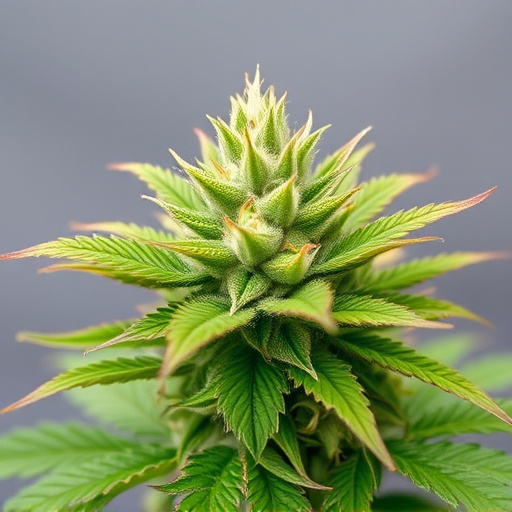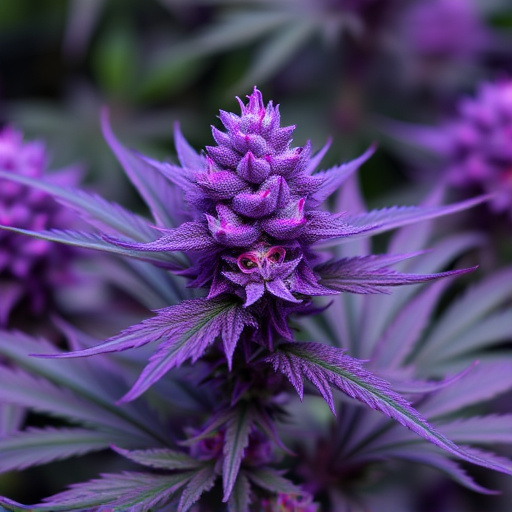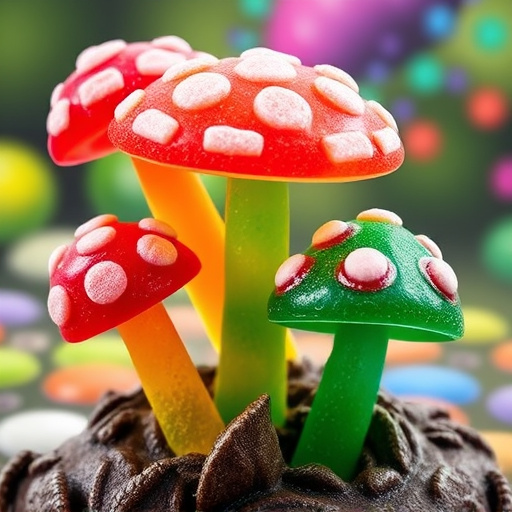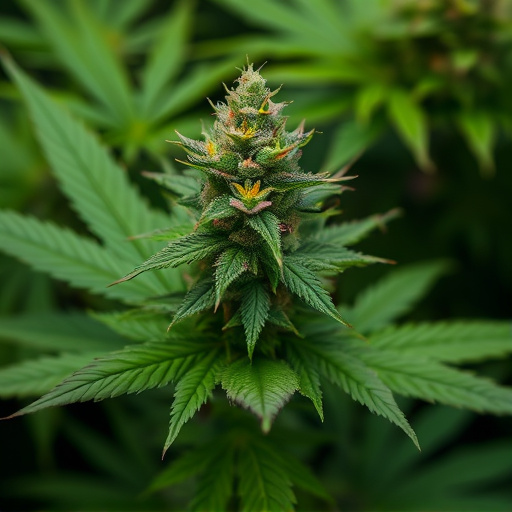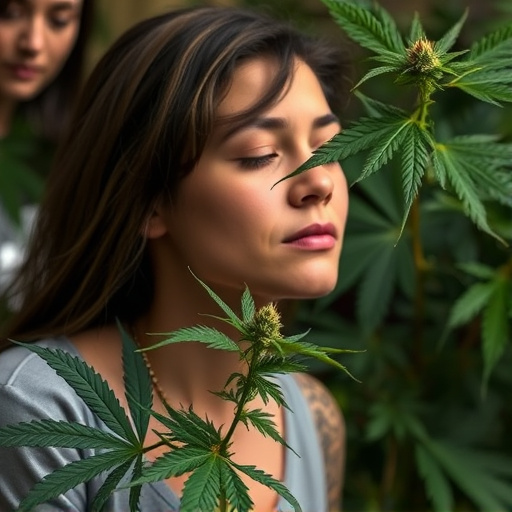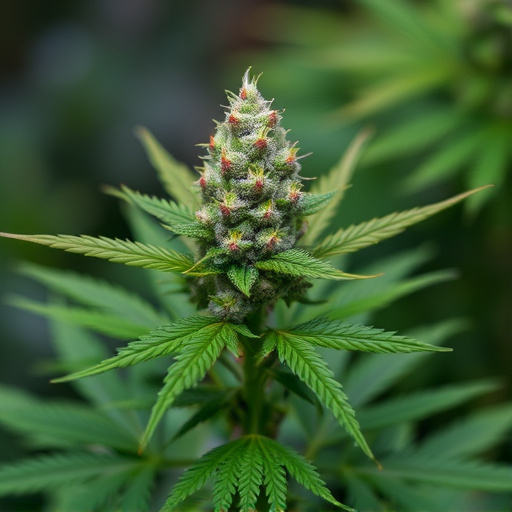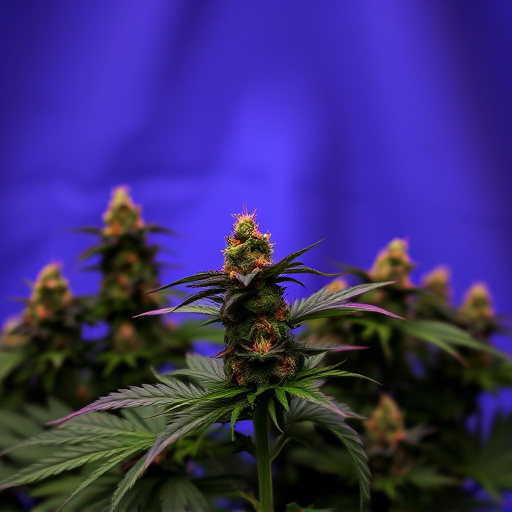While cannabis strains for anxiety have gained popularity, they carry risks. Studies show both positive and negative impacts on mental health, especially in individuals with pre-existing conditions like depression or PTSD. High THC concentrations can induce paranoia and psychosis, while regular consumption may lead to dependence and tolerance. Long-term effects on cognitive function, respiratory health, and cardiovascular issues are not fully understood. The effectiveness of strains depends on individual biochemistry; Sativa for social anxiety and Indica for generalized anxiety or insomnia. Balancing types with high CBD and low THC can optimize outcomes. Risk mitigation involves selecting lower THC, higher CBD strains and responsible use with small doses and tracking effects to ensure safe, effective relief without compromising well-being.
“Cannabis flower, with its growing popularity, offers potential therapeutic benefits, especially for managing anxiety. However, it’s crucial to understand the risks associated with consumption. This article explores the potential dangers of cannabis flower, focusing on its effects on mental health, particularly anxiety. We’ll discuss how different strains can either alleviate or exacerbate symptoms, and provide insights into mitigating risks to ensure a safe and beneficial experience. By understanding these factors, users can make informed decisions regarding their mental well-being.”
- Potential Risks of Cannabis Flower Consumption
- Cannabis Strains for Anxiety: A Balancing Act
- Mitigating Risks and Maximizing Benefits
Potential Risks of Cannabis Flower Consumption
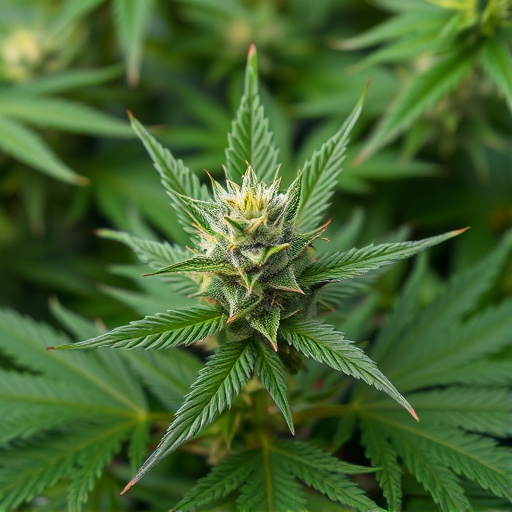
While cannabis flower has gained popularity as a potential treatment for various conditions, including anxiety, it’s crucial to acknowledge that its consumption isn’t without risks. Studies have shown that cannabis can produce both positive and negative effects, with the latter becoming more apparent in certain individuals. One significant concern is its impact on mental health, particularly in those with pre-existing conditions such as depression or post-traumatic stress disorder (PTSD). The THC present in cannabis strains for anxiety can induce feelings of paranoia, anxiety, and psychosis, especially in high concentrations, exacerbating existing symptoms.
Additionally, regular consumption may lead to dependence and tolerance, requiring higher doses over time to achieve the desired effects. This can result in a vicious cycle where users struggle with increased anxiety when unable to access cannabis or reduce their intake. Moreover, there’s limited research on the long-term effects of cannabis use, leaving potential risks related to cognitive function, respiratory health, and cardiovascular issues largely unexplored but not entirely ruled out.
Cannabis Strains for Anxiety: A Balancing Act
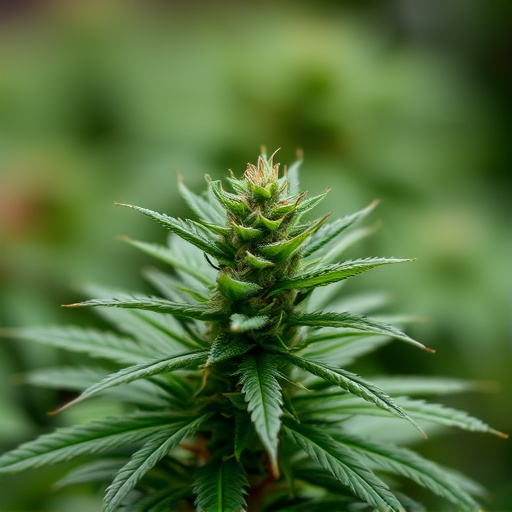
Cannabis has gained popularity as a potential treatment for various conditions, including anxiety disorders. While some people find relief through certain cannabis strains, it’s crucial to understand that managing anxiety is a delicate balance. Different cannabis strains offer unique combinations of cannabinoids and terpenes, which can either mitigate or exacerbate symptoms, depending on individual biochemistry.
Not all cannabis strains are created equal when it comes to treating anxiety. Sativa strains, known for their uplifting and energizing effects, may help reduce social anxiety in some individuals. On the other hand, Indica strains, with their calming attributes, might provide better relief for those dealing with generalized anxiety disorder or insomnia-related anxiety. Finding the right balance between these two types and selecting a strain with beneficial cannabinoids like CBD and low levels of THC can significantly impact outcomes, ensuring that cannabis is used as a therapeutic tool rather than a source of added distress.
Mitigating Risks and Maximizing Benefits
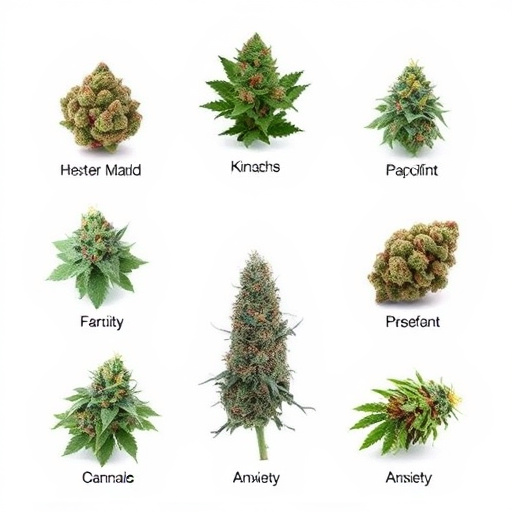
Mitigating risks and maximizing benefits is key when exploring cannabis flower for managing anxiety. While cannabis can offer potential therapeutic advantages, it’s crucial to understand its complexities. One way to mitigate risks is by selecting suitable cannabis strains for anxiety, focusing on those with lower THC (tetrahydrocannabinol) content and higher CBD (cannabidiol). Strains known for their calming and relaxing effects, such as Indica varieties or hybrid blends with significant CBD levels, can be beneficial.
Additionally, responsible use is paramount. Starting with small doses and gradual increases allows individuals to gauge their body’s response. Keeping a record of intake and effects can help manage expectations and ensure cannabis is used effectively for anxiety relief without compromising safety or well-being.
While cannabis flower holds promise for managing anxiety through specific strains, it’s crucial to acknowledge potential risks. Understanding these risks—such as short-term memory impairment and heightened anxiety in susceptible individuals—is essential for making informed decisions. By carefully selecting suitable cannabis strains and practicing moderation, users can maximize the therapeutic benefits while mitigating adverse effects. Further research is needed to fully explore the complex interplay between cannabis and mental health.
